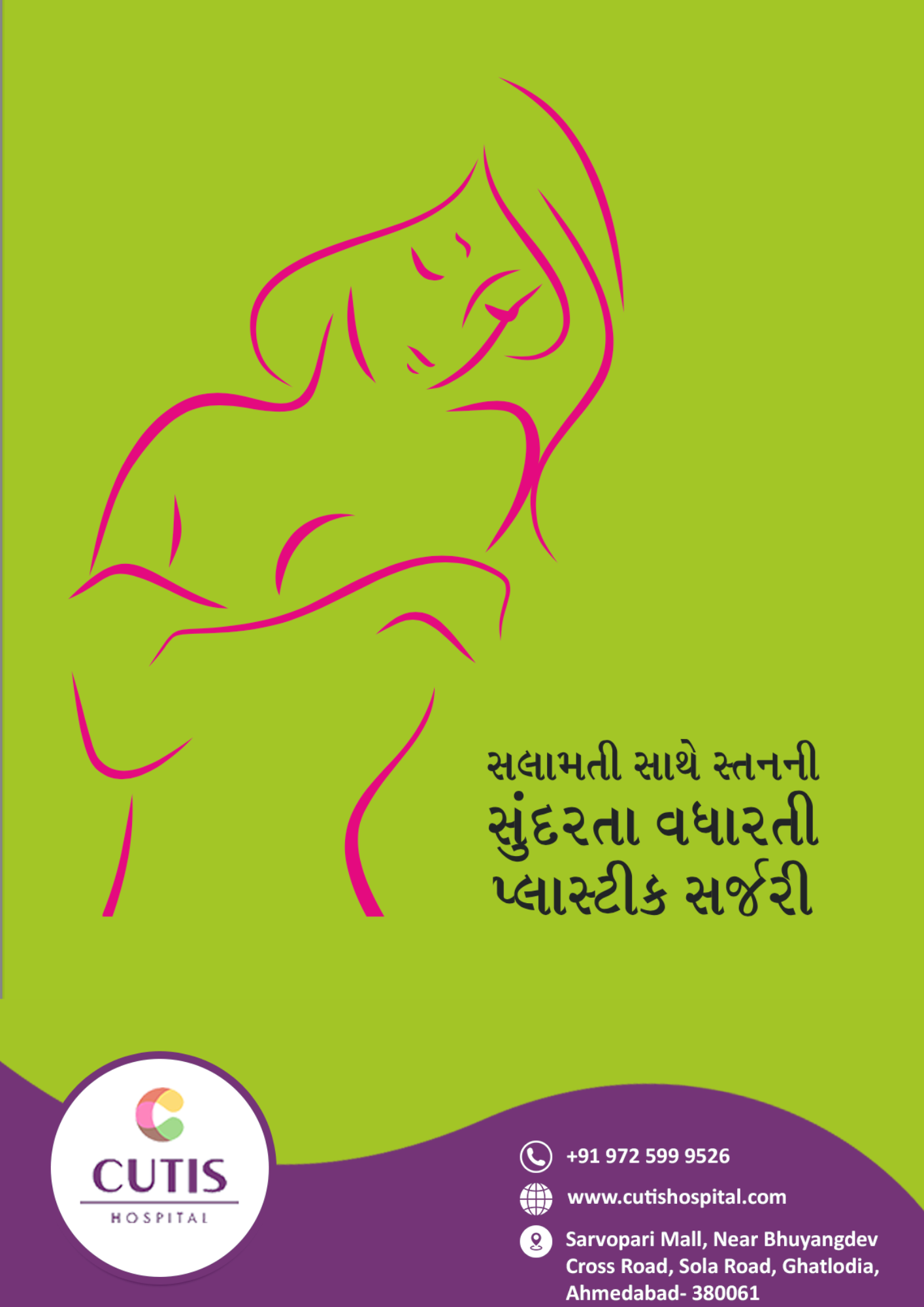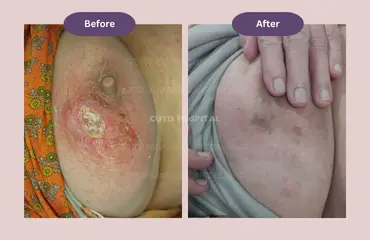The following symptoms of mastitis may appear suddenly:.
At Cutis,
Skilled & Experienced Surgeons
Expert Nursing Staff
Sanitized Set-Up/Tools


Mastitis is the inflammation of the breast tissues resulting from infection or obstruction of the milk ducts. It is commonly seen in breastfeeding women. However, other women may suffer from mastitis.
In lactating women, a bacterial invasion through a fissured nipple may cause postpartum mastitis. It usually happens after the second postpartum week due to build-up of milk within the breast tissues of lactating women. The bacteria responsible for the breast lactational mastitis are –
In non-lactating women, mastitis may result from the periareolar infection or peripheral breast abscesses.
Inflammation around the non-dilated sub-areolar breast ducts. This condition is known as periductal mastitis.
Resulting from an underlying health condition, such as
The breast lobules drain into the lactiferous ducts. These ducts form lactiferous sinuses. They work as the reservoirs for milk during lactation. The lining of the lactiferous ducts undergoes epidermalization, and keratin production may obstruct these ducts and form breast abscess at this time. Therefore, breast abscesses usually form in breastfeeding women.
Non-lactating women may even develop breast abscesses due to new-onset diabetes, mycobacterium infection or inflammatory breast cancer. Therefore, a secondary health condition is responsible for the development of breast abscesses in non-lactating women in most scenarios.
At Cutis, skilled cosmetic surgeons determine the method of treatment after examining the size of a breast abscess along with other factors.
If there is a large cavity following the procedure, then it is filled with gauze to promote further drainage. It prevents the incision from healing before complete drainage.
Yes, breast abscesses may recur after the treatment. The non-puerperal abscesses have a higher rate of recurrence and a patient may need to undergo the incision and drainage procedure multiple times.
At Cutis, expert surgeons may perform I&D (Incision and Drainage) in order to treat the recurring abscesses. A detailed medical examination of the abscesses is performed to rule out any underlying health conditions.
The Incision and Drainage (I&D) procedure may be performed under either general or local anesthesia. A surgeon will determine what type of anesthesia will be used during a procedure after examining and consulting with a patient.
During the procedure,
Instead of using a drain, a gauze packing may be used to collect the fluid. This packing collects the fluid.
It is not possible to breastfeed after draining an abscess. However, you have to pump the breasts frequently in order to release the milk; otherwise, the breast may feel full and painful. You are likely to experience no complication after the incision and drainage or needle aspiration, as these procedures are performed under the supervision of skilled surgeons at Cutis.
However, the following complications may occur if expert surgeons do not perform these procedures:.
Cutis Hospital is conveniently located in Ghatlodia, Ahmedabad, making it easily accessible via multiple modes of transportation. Below are the various ways you can reach our facility:
Sardar Vallabhbhai Patel International Airport: Located approximately 12.7 km from Cutis Hospital, offering convenient access for patients traveling from outside the city.
Chandlodiya Railway Station: Approximately 2.4 km from Cutis Hospital.
Ahmedabad Railway Station: Around 11 km from our center.
GSRTC:
Ahmedabad Central Bus Station (GSRTC): About 10.3 km from the hospital.
AMTS:
Bhuyangdev Cross Road Bus Stop: Just 500 meters from Cutis Hospital.
BRTS:
Bhuyangdev BRTS Bus Stop: Only 170 meters from our center.
We provide effective surgical and non-surgical treatments for all parts of the body. At Cutis Hospital, our cosmetic and plastic surgery team is committed to giving patients safe and high-quality care.